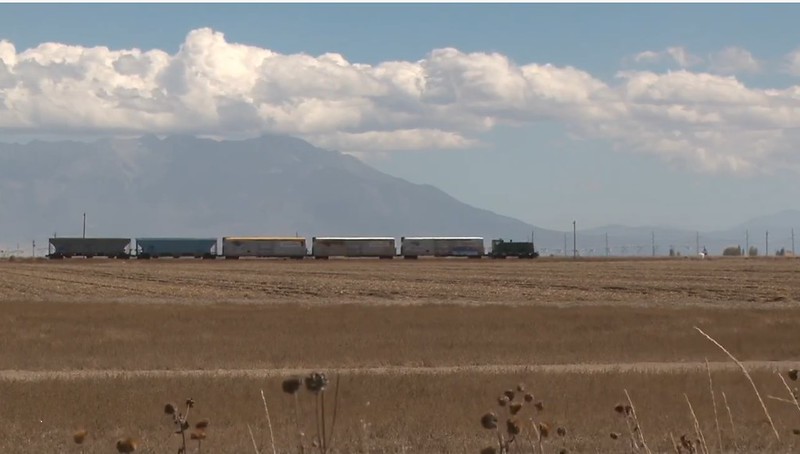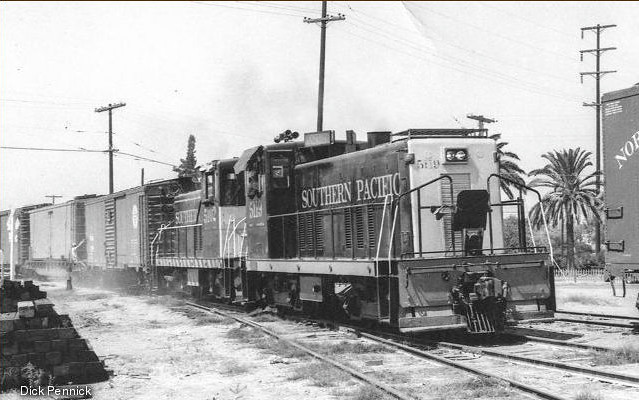Chuck, you crammed a lot of information into a small post. It has taken some long thought (AKA Googling) to address each point.
Here we go...
chuck wrote:Weight/mass is non dimensional.
Totally, totally mass is non dimensional but has nothing to do with what a scaled up version of what Williams 70 tonner would weigh. I haven’t weighed mine yet but when I do I might just have some fun comparing what it would weigh scaled up to the real GE 70 tonner.
chuck wrote:We can debate what a railroad car would weigh if we shrunk it down to 1/48 size.
Why would any sane person want to do that when we can easily calculate the weight?
chuck wrote:I don't know how we are going to scale the atoms/mass since the car is just a replica.
The size and mass of atoms is a constant. To make something bigger or smaller you do not scale the atoms, you add or subtract atoms to or from the item being made larger or smaller.
chuck wrote:We aren't operating in 1/48 scale gravity either.
Well no, we are not operating in 1/48 gravity, gravity in any one location on earth is a constant, no matter what scale we make our trains. That is a good thing.
chuck wrote:Flying scale model planes aren't really "scale" because they are operating in 1:1 air.
I thought we were talking about trains. Well, if you want to thread drift, fine. I fondly remember the time my Aerodynamics 101 teacher told the class that flying wings were unstable and used the crash of the Northrup YB-49 as proof. I immediately began making a paper model of the YB-49 at my desk. After class, I waited for the last student to leave before telling him the YB-49 flying wing was not unstable and showed him the reflexed airfoil of my model. I explained that the reflex served to stabilize the pitch of the wing just as the horizontal stabilizer stabilizes the pitch of a conventional aircraft. I then pitched the model at the back wall. I was a little shocked that on its first flight it flew straight over the desks and hit the back wall. I then said, “See, stable.” The teacher said that a paper model does not test the design of a real airplane and if I didn’t like the way he was teaching, GET OUT!”
The instructor made the same point you just did, and I understand, little trains will never behave like full size trains.
chuck wrote:The wing chords are adjusted to get the model to fly and the air speed is the non scale (aka 1:1) real airspeed.
It is not necessary to adjust the wing chord to get a scaled down airplane to fly, adjusting the aircraft's weight works just as well. Both methods change the wing loading.
Getting back to toy trains, sometimes we adjust the length of our scale toys to get them to negotiate non-scale O-27 curves. I guess that would be equivalent to adjusting the chord of a model airplane.
chuck wrote:Wayne wrote:and raised concerns about 7285 not being able to pull the train up the hill.
aka HILL, aka NOT FLAT
AKA. The definition of aka is an abbreviation that means also-known-as.
So, you say hill is also known as HILL and hill is also known as NOT FLAT. Very good Chuck. (FYI, I understand your point, we are talking about level track performance, not performance on grades.)
chuck wrote:From Wikipedia article on the GE 45 tonner:
The GE 45-ton was extremely versatile and many variants existed. It has a high weight to power ratio and has excellent traction, rated to be able to pull 20 loaded freight cars on level track.
Now theses were built in WW-2 and the size/loading of freight cars was considerably lower so the car count for modern equipment would be considerably less.
I like your then and now information. Our toy trains are so scale like we have evolved easy rolling trucks to mimic improvements in real trains. As our old friend Pete once said, “Main advantage of modern trucks is reduced rolling resistence. The same engine will pull twice as many cars with modern trucks vs post war bar end or staple end trucks.”
Reference:
https://ogrforum.ogaugerr.com/topic/rem ... ing-trucks 7/5/15, 9:26 PM.
Is any discussion of how many cars an engine will pull complete without bringing in THE DAVIS EQUATION?
The “Modified” Davis equation for Freight Cars published in AAR RP-548 takes the form:
R’ = 1.3 + 72.5/wn + 0.015v + 0.055v^2/wn (2)
Note the second term is a constant by the number of axles. In Davis’ work, when most
rollingstock had journal bearings, it was 29lb/axle. The constant in RP-548 is
based on 18lb/axle, for a four axle wagon with roller bearings, which is not immediately
obvious in the formula above.
Great! Frank Szanto worked the equation for us.
Reference:
https://www.scribd.com/document/423130043/Szanto-FrankOnward toy train soldiers...
GE 70 Tonner Tractive Effort (starting) 41,300 lbs @ 30%
Reference:
https://www.thedieselshop.us/Data70-ton.HTMLOur Toy Train Mentality, "If it will start a train it will pull it at full speed," allows us to continue without regard to how hot our 0.0025 HP traction motors are going to get.
Old journal box cars
41,300 lbs / 29 lb / axle = 1,424 axles.
1,424 axles / 4 axles / car = 356 cars.
Scale the pulling power down by 1:48 and we get 356 / 48 = 7

New roller bearing box cars
41,300 lbs / 18 lb / axle = 2,294 axles.
2,294 axles / 4 axles / car = 573 cars.
Scale the pulling power down by 1:48 and we get 573 / 48 = 11 cars.


When I get around to testing my GE 70 Tonner I will report on how many cars it will pull (limited to my test track length of 127 inches.



